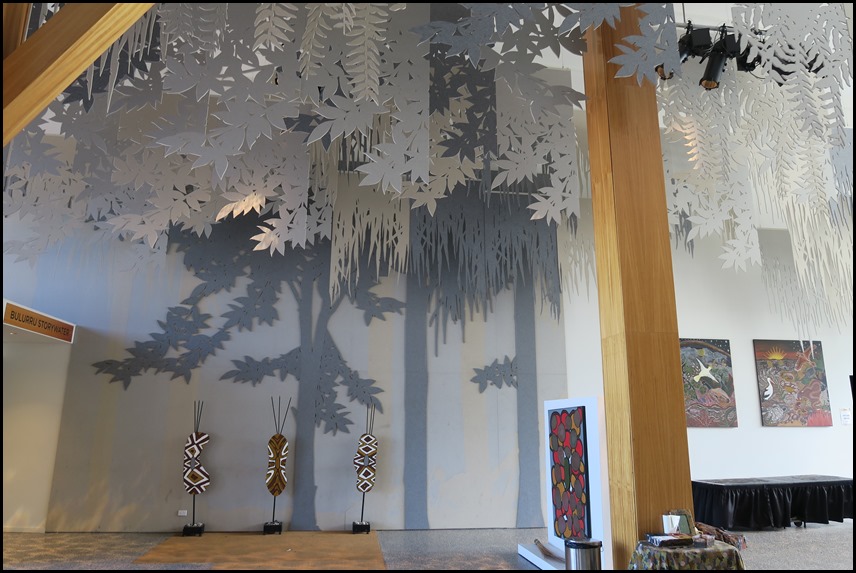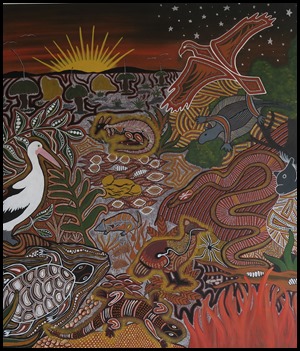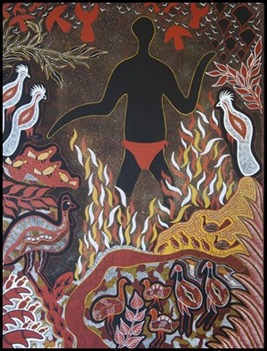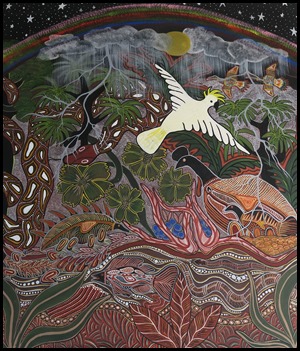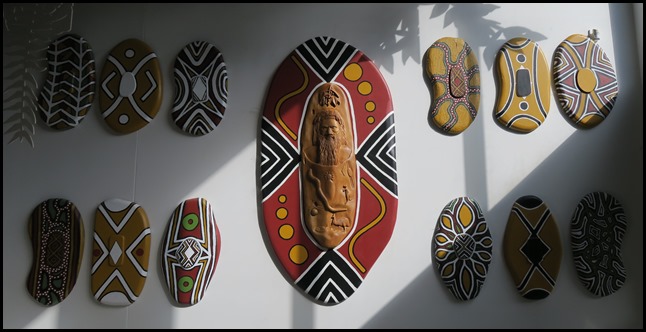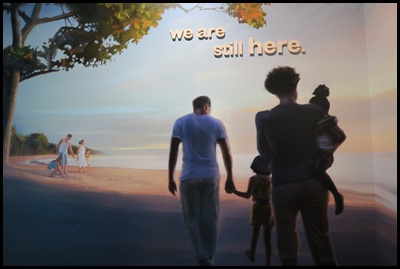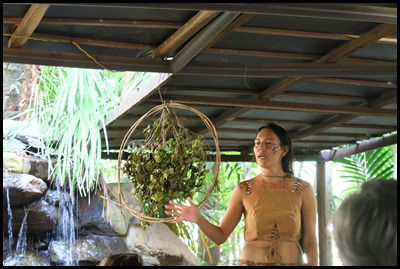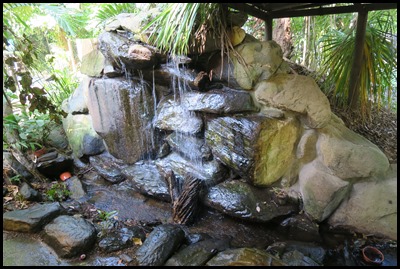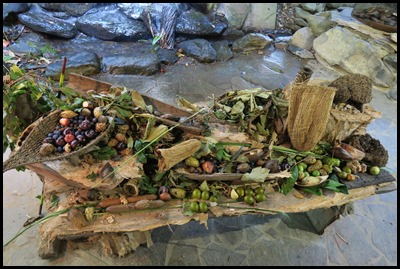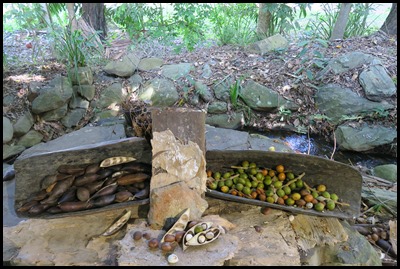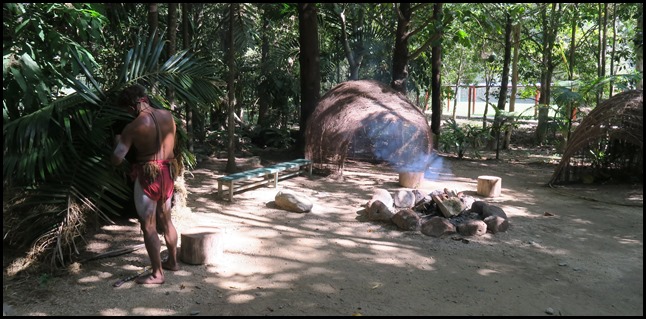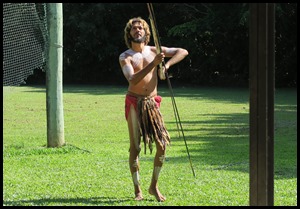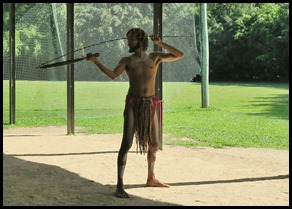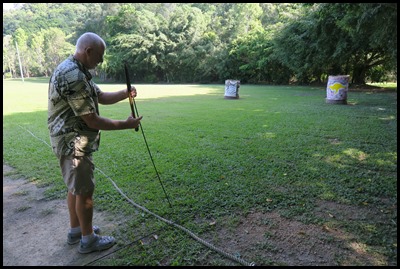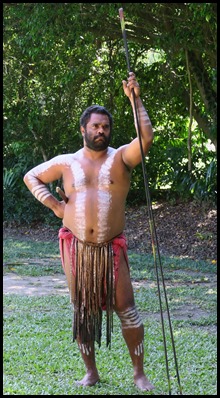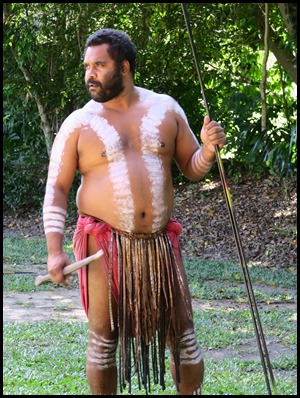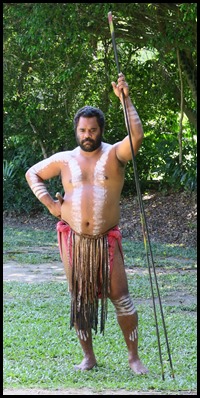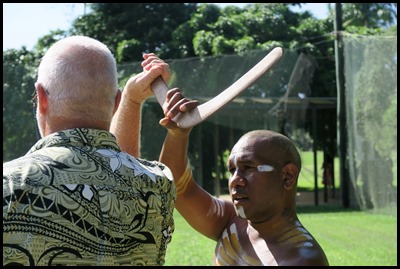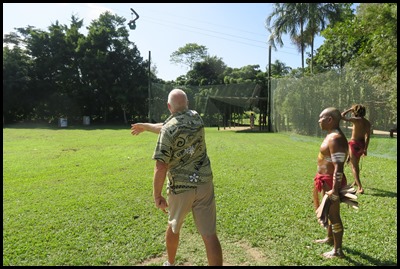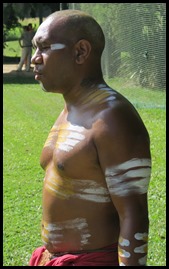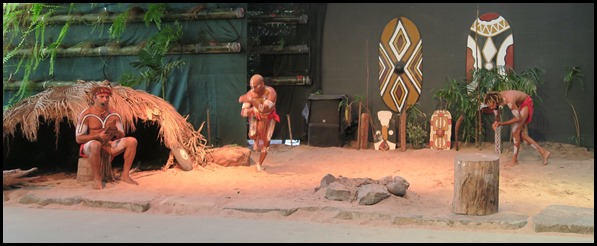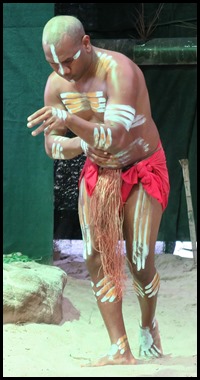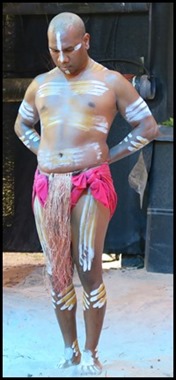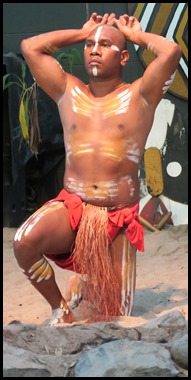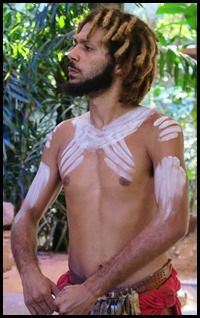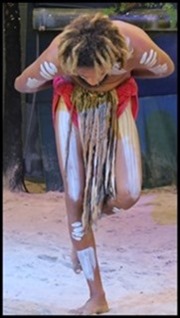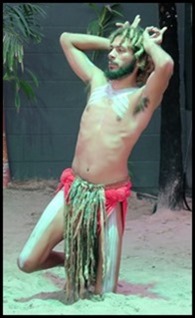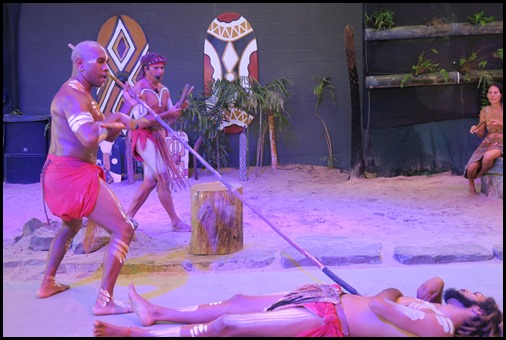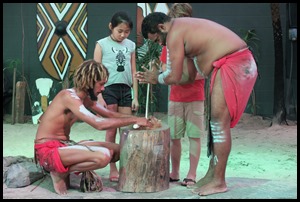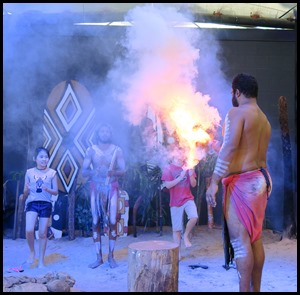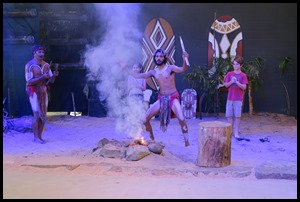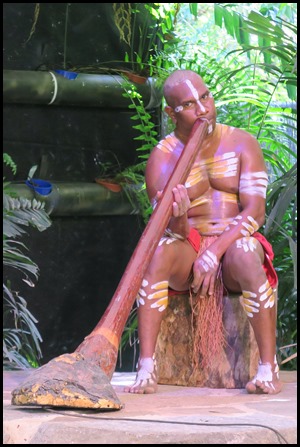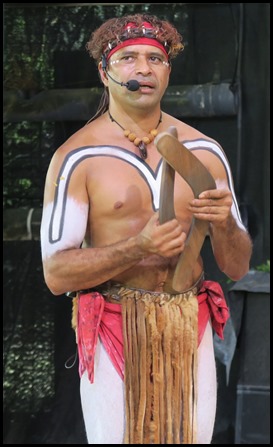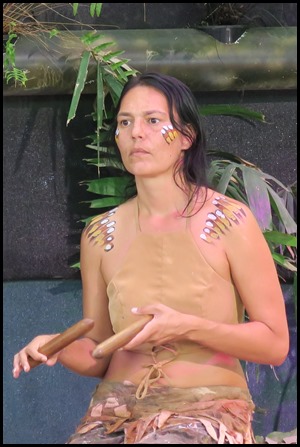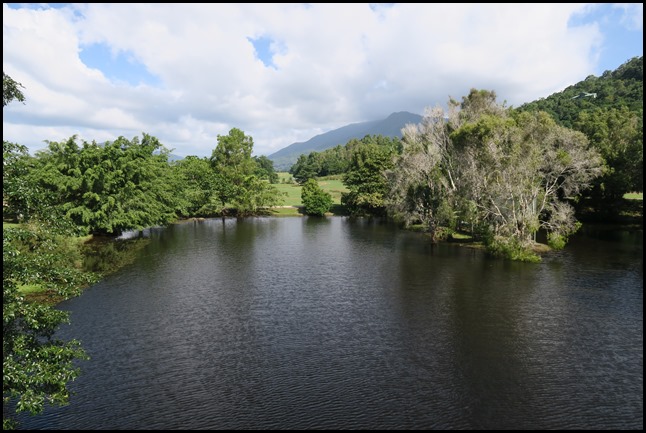Tjapukai

|
Tjapukai Cultural Centre
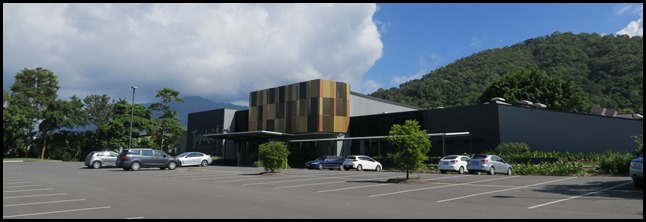 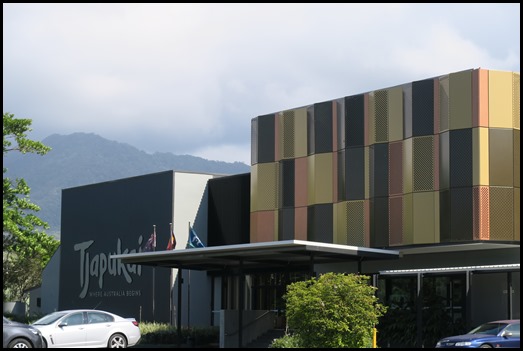 We walked the short distance from the
Skyrail and couldn’t believe our eyes. This was not what we had expected. Tjapukai was posh.
In 1987,
a small group of black and white Australians wrote a one-hour play about the
ancient spirit of the barna. They used Aboriginal words and traditions, with
singing and dancing. They performed the show for the first time in a small dance
theatre in Kuranda, attracting more visitors than they anticipated. Since that
time the Tjapukai Aboriginal
Culture Park, as it is now known, has grown
into a $9 million enterprise and is the largest employer of indigenous
Australians in the country.
It is located in Smithfield at the
base of the Skyrail cableway, showcases the 40,000-year-old Aboriginal culture
through dance and song. It is both an entertaining spectacle, and an educational
experience for everyone. The park is set on twenty five acres and combines the
latest in theatre and technology. There are interactive activities with
Aboriginal people who teach authentic traditional culture and
customs.
The Tjapukai people inhabited the tropic region that extends from Cairns to Port Douglas and inland to Kuranda. Their name means ‘People of the Rainforest'. The displays and cultural dances within the park portray the Dreamtime through to the present reality of today's Tjapukai people.
The impressive entrance led to a huge space – the gallery.
Some of the art.
We entered a theatre and watched four short films about European slaughter of the Aborigines, life on reservations, children being taken from their parents and educated in Mission Schools and how bonds have been forged for a way forward. We are still here. Moving, shocking, thought provoking.
We crossed a bridge where we could see the Skyrail we had just left, program in hand.
We sat and listened to a talk about food given by one of the guides, a nice backdrop waterfall.
Fruits and seeds collected by the womenfolk. The next table were all poisonous to eat but the Aboriginals found ways to cook and eat the seeds after several days of soaking in nets in a river. After grinding to powder a flat bread was made. Aborigines have found the nutritional values in all the flora and fauna around them and they have learnt about the natural healing and medicinal properties these plants provide for them. As far as the Aboriginal people are concerned every single living thing on the beach and in the rainforests has a purpose and they have found ways on how to utilise them for their tribe's survival. Our sugar rich diet has led to massive amounts of diabetes and life expectancy is much shorter than their European counterparts.
Repair work on a mock-up family settlement.
Next, we learned from Hawk about spear throwing using a release stick.
Bear had a go, not as easy as it looked.
Watched by quite a man.
Boomerang throwing lesson. Dingo was very impressed – it’s all to do with the wrist snap and there is a difference between a left handed boomerang and a right, it’s all to do with the bevel on the hand grip.
Our last event was the cultural show in the theatre.
The story of the cassowary and the kangaroo.
A noble bird.
The kangaroo........
..... killed by the hunter.
Making fire........
..... to the sounds of the didgeridoo, tapping boomerangs and clicking sticks.
After the show we re-crossed the bridge and went to find our bus.
ALL IN ALL A GLITZY LOOK AT INDIGENOUS LIFE A BIT TOO TOURISTY BUT I ENJOYED THE BOOMERANG THROWING
. |
